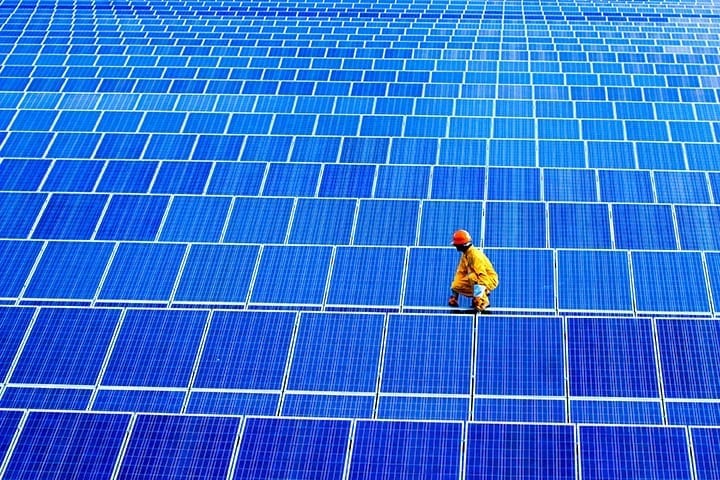The post Solar Microgrids Offer Pathway to Decarbonize Mining appeared first on POWER Magazine.

Mining is an energy-intensive industry; digging, crushing, and processing minerals takes a lot of power, and mines often operate 24 hours a day, seven days a week. Like other industries, mining companies are seeking solutions to reduce their emissions; both for the sake of the planet and in response to increasing pressure from customers to take a more environmentally friendly approach.
Increasingly, manufacturers that use minerals want to produce goods using more sustainable processes across their entire supply chains. While raw materials, such as rare earth metals, are essential to products such as consumer electronics and electric vehicles, manufacturers are looking to suppliers to reduce the overall carbon intensity of their operations.
Brazil has rich reserves of metals, producing and exporting about 80 mineral commodities, which help to make the country the sixth-largest mining industry in the world (Figure 1). However, mines are often located in remote, off-grid locations, giving mine operators limited options for decarbonization. Without access to grid power, operators have had little choice but to use polluting and expensive oil-fueled generators to supply the power they need.

With the falling cost of renewable energy, decarbonization across the mining industry is becoming economically viable. Operators are now looking at how microgrids can enable them to access renewable energy when operating off grid.
Solar Powered Microgrids
Solar PV is proven technology, providing clean and inexpensive power to help meet energy demand worldwide. Solar power assets are typically grid connected, which enables any power that is not ‘self-consumed’ where it is generated to be fed back to the grid. The main drawback of using solar in isolation is that it cannot generate power 24 hours per day.
Solar microgrids are hybrid energy systems comprising solar generation and energy storage, which provide access to electricity even when the sun isn’t shining. Microgrids are self-sufficient local energy networks that can serve a neighborhood community, campus, or business. They can operate alongside the existing energy grid, or completely independent of it. Today, batteries provide the most straightforward way to store energy, but hydrogen is also becoming more viable for energy storage as the price of the specialist equipment falls.
Key Benefits of Solar Microgrids
Solar microgrids enable businesses to decarbonize their off-grid operations by moving away from fossil-fueled power generation. Energy is generated on-site, eliminating the need to transport diesel. A 1-MW solar plant typically produces 2,000 MWh annually, which can displace about half a million liters of diesel.
Solar has become one of the cheapest sources of energy because of low equipment costs and the longevity of the assets, which typically last for up to 30 years. Solar also requires relatively little maintenance (Figure 2) compared with diesel-fueled gensets, and is far more reliable, which means improved reliability of supply and better business resilience. Battery costs are also on a downward trajectory, with projections forecasting a 50% decline from 2017 to 2030.

Connecting a microgrid to the main grid can also improve reliability of the network by maintaining an optimal balance between production and consumption of energy. The battery storage acts as a ‘spinning reserve’ to compensate for generation shortfalls. Having a more reliable energy infrastructure brings economic value to society by boosting productivity and improving the quality of people’s lives.
When grid-connected, microgrid operators can also benefit by providing ancillary grid services to the grid operator. Grid operators pay for ancillary services to help them maintain a stable grid frequency through grid-balancing schemes. In other words, the microgrid can become a source of revenue as well as electricity.
Energy accounts for up to 30% of operating costs for a typical mining operation, so any cost reductions can make a big impact on the bottom line. By committing to long-term renewables power purchase agreements (PPAs), typically 10–15 years in duration, mining companies get access to cheaper energy. Whereas the price of diesel is often volatile and unpredictable, PPAs give off-takers predictable prices for their energy over the long term.
A further benefit of PPAs is that they enable businesses to access low-carbon power from solar PV parks without having to invest capital in their own power plants. The off-taker business commits to buy a certain amount of electricity per year, over a number of years, at an agreed rate.
Even with hybrid solar plus battery systems, off-takers can often benefit from having their own microgrid without having to outlay capital. Some microgrid developers offer “battery storage-as-a-service” business models, enabling customers to benefit from energy storage by paying for the batteries through shared savings.
Operating independently from the grid is especially beneficial in certain regions of Brazil, where grid reliability leaves a lot to be desired. Microgrid off-takers benefit from security of supply and reduced power outages.
Electrify to Decarbonize
Mining companies in Africa and South America are already showing what’s possible by adopting renewables. The Zaldívar copper mine in Chile will be the first mine in Latin America to operate with 100% renewable energy. As a result of a 10-year deal to buy renewable power from Chilean utility Colbun, the mine will reduce its emissions by 350,000 metric tons per year.
The Vametco mine in the North West province of South Africa recently announced that it will use vanadium redox flow batteries (VRFB) to store energy from a 3.5-MW solar PV plant. The microgrid will supply just under 10% of the mine’s electrical needs at any time. VRFB technology can offer almost unlimited energy capacity by using larger electrolyte storage tanks.
Electrification of mining equipment, such as trucks and excavators, is at an early stage. Today, only 0.5% of mining equipment is fully electric. However, cost of ownership of battery electric vehicles compares favorably with internal combustion engine vehicles. Fuel cell vehicles that run on green hydrogen are another zero-emission option to decarbonize a mining operation, especially for large plant vehicles that would otherwise require huge (and heavy) batteries to provide sufficient power.
Hybrid microgrid solar power systems offer mining companies a commercially viable pathway to increase their use of renewable energy and begin their decarbonization journey. Because microgrids deliver cheaper and predictably priced low-carbon electricity, as well as autonomy from the grid and improved supply resilience, their adoption is becoming an increasingly important part of the decarbonization strategy for mining businesses.
—Jamie MacDonald-Murray is chairman of Lisarb Energy, one of Brazil’s fastest growing solar developers.
The post Solar Microgrids Offer Pathway to Decarbonize Mining appeared first on POWER Magazine.